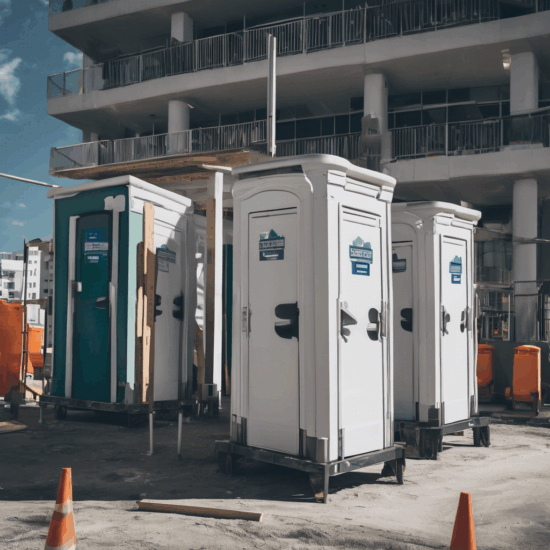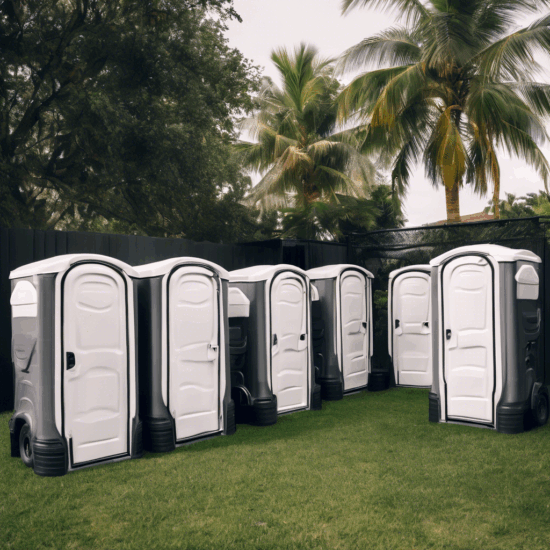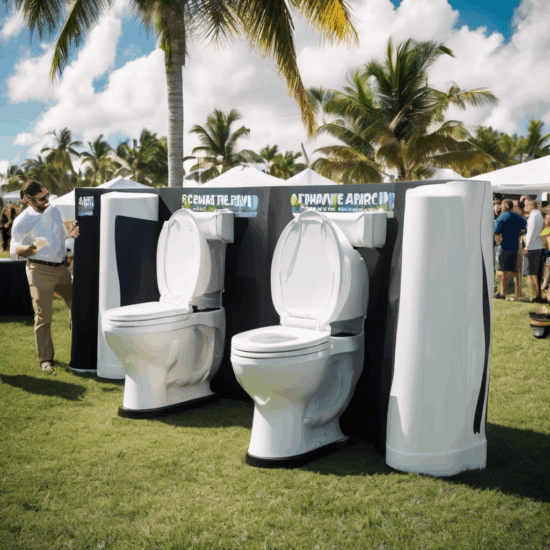Miami’s Outdoor Event Season: The Unspoken Necessity of Adequate Restrooms
As the South Florida sun climbs higher, Miami braces for its signature outdoor event season. 🌴 From sprawling music festivals on Virginia Key to chic Art Basel satellite fairs in Wynwood, waterfront weddings, and bustling corporate gatherings under swaying palms, the city transforms into an open-air stage. Yet, amid the meticulous planning of stages, sound systems, catering, and security, a fundamental aspect of guest comfort and public health often remains an afterthought: restroom facilities. The success of any large-scale outdoor event hinges significantly on this unglamorous, yet critical, detail.
Ignoring or underestimating sanitation needs isn’t just inconvenient; it can actively detract from the event experience, tarnish reputations, and even pose public health risks, particularly in Miami’s demanding climate. Long lines snaking under the relentless sun ☀️, poorly maintained units, or simply an insufficient number of facilities can quickly sour an otherwise stellar event, generating negative feedback that echoes long after the last vendor has packed up.
The Scale of the Challenge: Beyond Basic Needs
The sheer volume and diversity of Miami’s outdoor events present a unique logistical puzzle. Consider a multi-day festival drawing tens of thousands, or an exclusive beachfront gala expecting discerning guests. The requirements differ vastly, but the core need remains: clean, accessible, and sufficient restrooms. Standard industry guidelines, often cited by organizations like the Portable Sanitation Association International (PSAI), provide baseline ratios – typically recommending one portable restroom unit per 100 attendees for a standard four-hour event without alcohol.
Key Consideration: When alcohol is served, restroom usage can increase by 30-40%, significantly altering the required number of units. Add Miami’s heat and humidity, which necessitates increased hydration, and usage rates climb even higher.
Furthermore, accessibility is not optional. The Americans with Disabilities Act (ADA) mandates accessible restroom options, requiring planners to incorporate ADA-compliant portable units, strategically placed for easy access. Failure to comply can lead to significant penalties and reflects poorly on an event’s inclusivity.
Moving Beyond the Standard Blue Box: Miami’s Elevated Expectations 🚻
While the standard portable toilet serves a basic function, Miami’s event scene often demands more sophisticated solutions. Event planners are increasingly turning to a wider range of options to meet varying guest expectations and event styles:
- Enhanced Portable Toilets: Units equipped with amenities like hand sanitizer dispensers, internal sinks, or even flushing mechanisms offer a step up in comfort and hygiene.
- Handwashing Stations: Essential for hygiene, separate multi-basin handwashing stations with soap and paper towels are crucial, especially where food and beverages are served.
- Luxury Restroom Trailers: For upscale events – weddings, corporate functions, VIP areas at festivals – climate-controlled restroom trailers have become the gold standard. These units offer features comparable to indoor facilities, including flushing toilets, running water sinks, high-end finishes, lighting, mirrors, and separate stalls for men and women. Their presence signals a higher level of care for guest comfort. 🚽
- ADA-Compliant Units: Specifically designed larger units with grab bars and sufficient turnaround space are non-negotiable for ensuring accessibility for all guests.
Strategic Planning: The Key to Seamless Sanitation
Effective restroom planning involves more than just ordering units; it requires careful consideration of multiple factors:
1. Accurate Headcount and Demographics: Estimate attendance precisely. Consider the mix of attendees – families with children, VIPs, general admission – as their needs and expectations might differ.
2. Event Duration and Type: Longer events naturally require more facilities and potentially more frequent servicing. Events heavily featuring food and drink necessitate increased restroom capacity and handwashing facilities.
3. Site Logistics and Placement: Determine optimal, accessible locations for restroom banks. Consider proximity to high-traffic areas but also discretion. Ensure service vehicles have clear access for cleaning and restocking without disrupting the event flow.
4. Weather Contingency: Miami’s weather is unpredictable. Ensure units are secured against wind and have adequate shelter or covering nearby if heavy rain is possible. Climate-controlled trailers offer respite from heat and humidity.
5. Permitting and Regulations: Check requirements with Miami-Dade County or the specific municipality regarding the number and type of portable restrooms needed for your event permit.
6. Provider Selection: Choose a reputable local sanitation provider with a proven track record in Miami. Look for reliability, cleanliness standards, timely delivery and pickup, and responsive servicing schedules.
7. Budget Allocation: View sanitation not as a cost to be minimized, but as an investment in guest experience and event success. Allocate sufficient budget for the appropriate quantity and quality of facilities, including regular servicing.
The Bottom Line: Prioritizing the Unseen
As Miami gears up for another season of sun-drenched celebrations and gatherings, event organizers must elevate restroom logistics from an operational footnote to a strategic priority. Adequate, clean, and appropriate sanitation facilities are fundamental to guest comfort, safety, and the overall perception of an event. In a city known for its style and hospitality, overlooking this basic human need is a risk few successful event planners can afford to take. Ensuring readiness for restroom needs is ensuring readiness for success. ✅


